Why Cotton Batting Is The Most Popular Choice For Quilters
Cotton batting is hands down the most popular choice of batting for quilters today. Some may even call it the quilting world’s MVP because it has long been inducted into the crafting Hall of Fame. Even though it's a common choice, cotton batting is far from average.
100% cotton batting is soft, durable and all natural… which has its pros and cons (depending on what you want). We've talked A LOT about batting here on the SQ blog, and now its cotton's turn. This post will highlight all of my favorite parts about cotton batting (that crinkle!) and what to watch out for (those seeds!)
You May Also Like...
- Quilting on a Budget with Poly-Blend Batting
- Why Wool Batting Makes the Warmest Quilts
- Why Bamboo Batting Makes the Perfect Summer Quilt
- Is There a Right Side to Quilt Batting?
- The Truth About Black Batting: When & Why to Use It
- Fusible Batting Tape: Why You Need It & How to Use It
- How to Choose the Right Quilt Batting
- Quilting Terms, Tools & Supplies
- Your Basic Quilting Questions Answered: Part I
100% Cotton Batting Options: Taste the Rainbow
Ok, so there’s not exactly a rainbow of cotton batting choices, but there are a few, and each has its own advantages! 100% cotton batting comes in white, natural, and even black. I discovered black batting a few years back when I was working with a quilt top with lots of dark blues, greens and reds, and wanted to maintain my quilt top’s intense saturation.
If you want to read more about my deep dive into the world of dark batting, read this post. But since black batting is a rarity in the 100% pure cotton world (you’ll find it more in cotton blends), let’s talk about our other two hues: white and natural.
In the quilt below I used a mid-loft white cotton batting. This quilt pattern is the Reflections pattern and can be purchased in the shop!
Trending patterns!
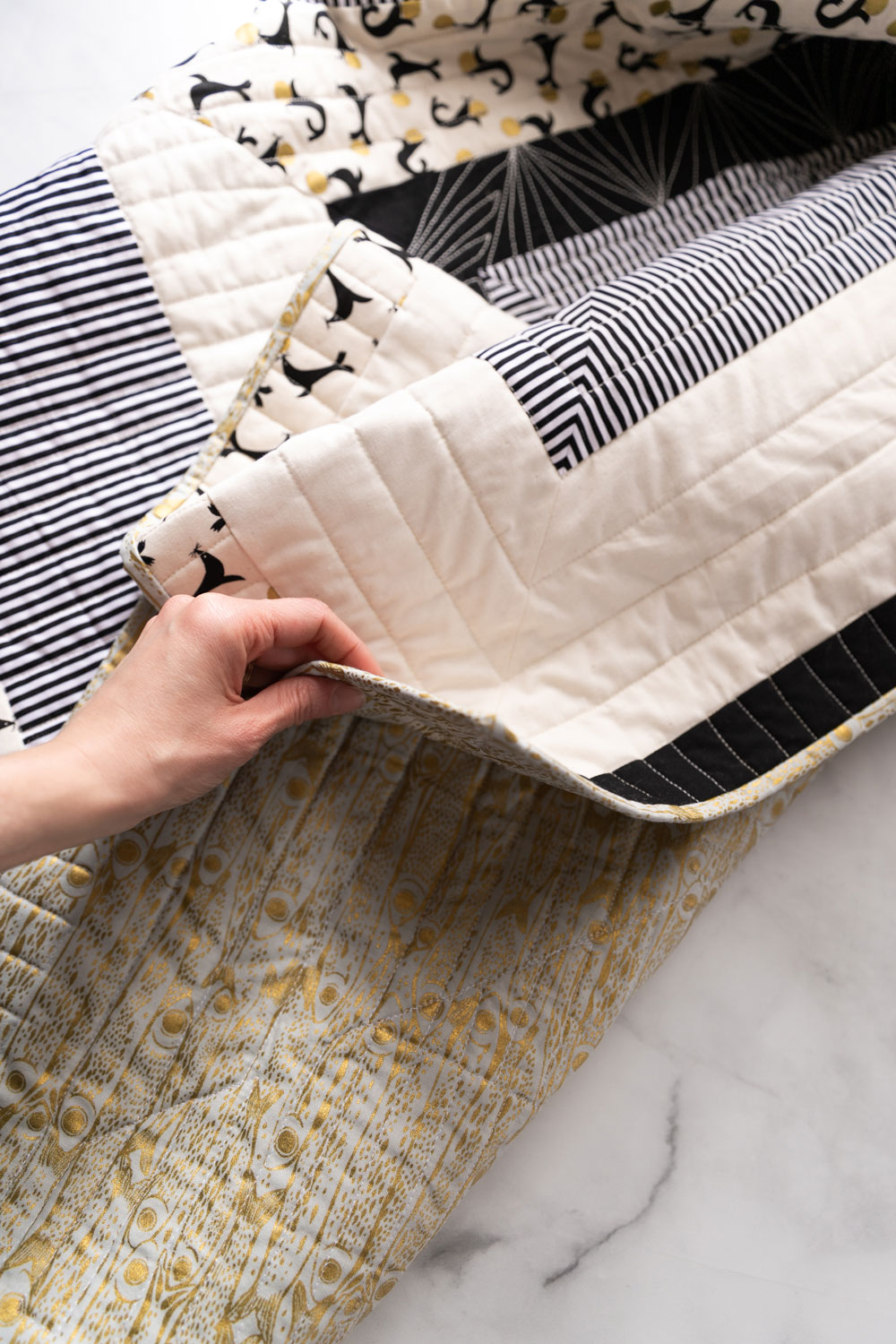
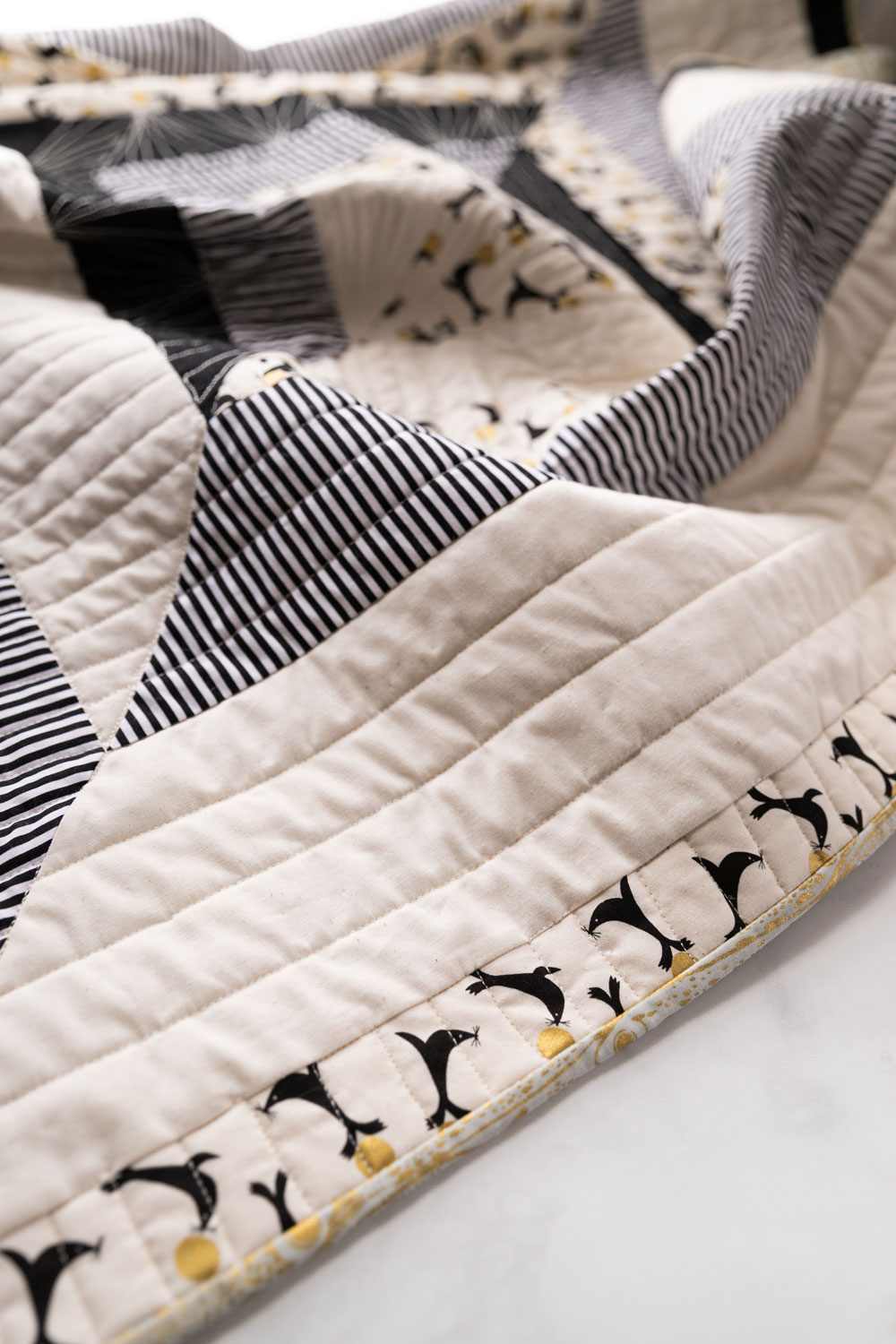
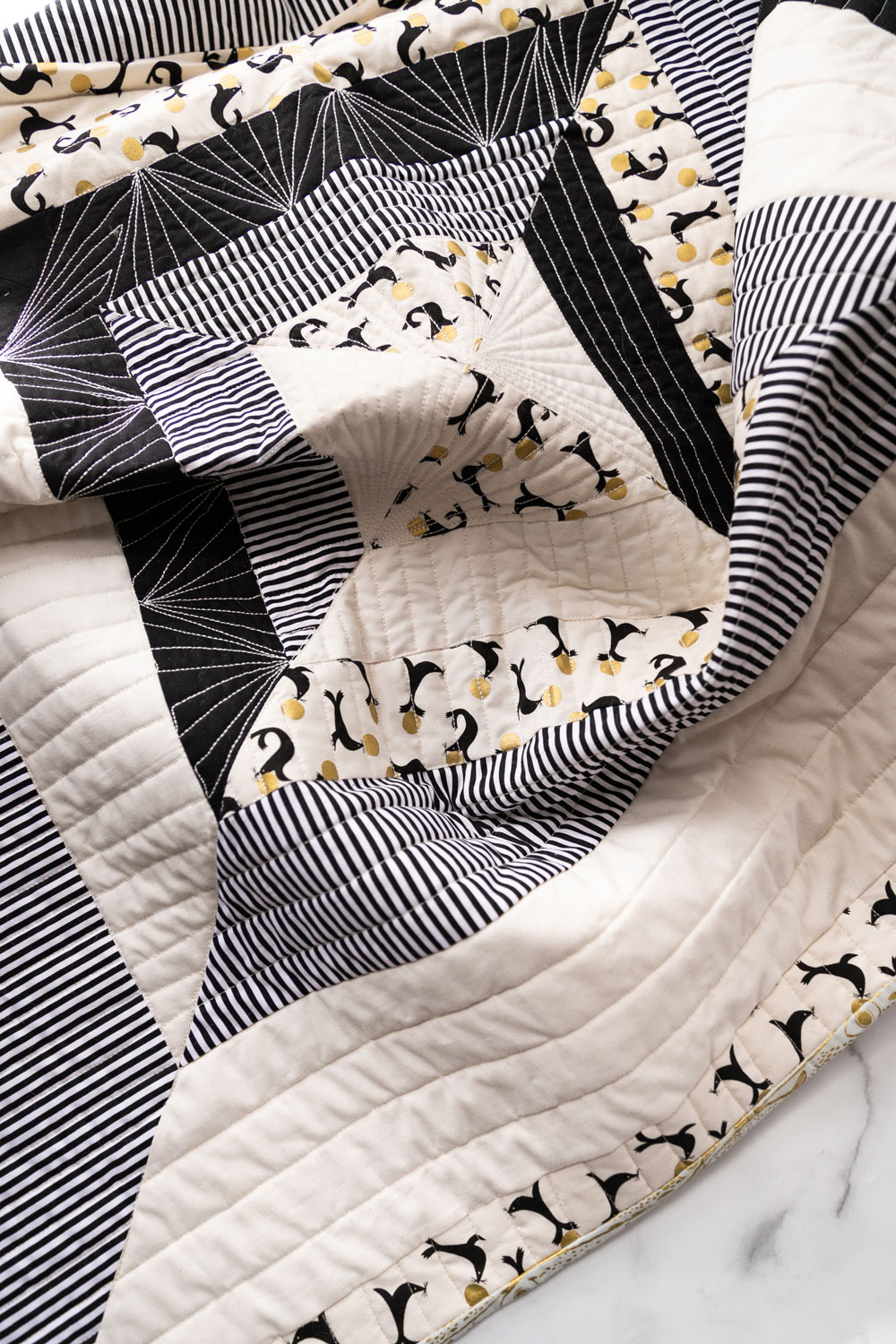
100% Natural Cotton Batting
If you’re in the market for some cotton batting, don’t just grab the first package you see with “100%” printed on it. White and natural colored cotton batting can look pretty different… especially if you’re using a lot of pure, crisp white fabric in your quilt top.
“Natural” cotton batting is unbleached, which is great if you’re going green (in the environmental sense) but not so great if you want your whites to stay looking white. The yellowish tint of natural cotton batting can show through pure white fabric, and chances are you chose that bright white for a reason. In short, white quilt tops love white cotton batting.
If you look closely at this type of batting you will also notice dark flecks. Those flecks are seeds. Seriously! If your quilt uses lots of light fabrics, those seeds will show through.
Watching out for pesky seeds is an extra chore I do not need while I am eating or quilting! This is also why I always get seedless watermelons. But unlike watermelons, whose seeds simply grow watermelon plants in your stomach (right?), cotton seeds can actually stain your quilt fabric. I don’t even know which one is worse. I think I’d rather live with fruit inside of me than obsessively spot-clean a quilt top!
Full disclosure, seeds from natural batting have never stained one of my quilts, however I stopped using natural cotton batting a while ago after realizing that dark flecks were showing through a solid ivory border. Such a bummer!
Cotton’s Cuddle-able Crinkle
Have you ever seen (or drooled over) those ultra-comfy looking cottage quilts with the perfect cozy crinkle? That’s cotton batting doing its thing!
The signature crinkle look of cotton-filled quilts comes from the other quality cotton is known for: shrinking. If you’ve ever owned a cotton… anything… you know that it likes to shrink. Cotton batting is no different. When cotton shrinks inside your quilt sandwich, it pulls everything in with it, creating that crinkly look.
See that killer crinkle in my Campfire quilt below? That's the beautiful texture of 100% cotton, baby!
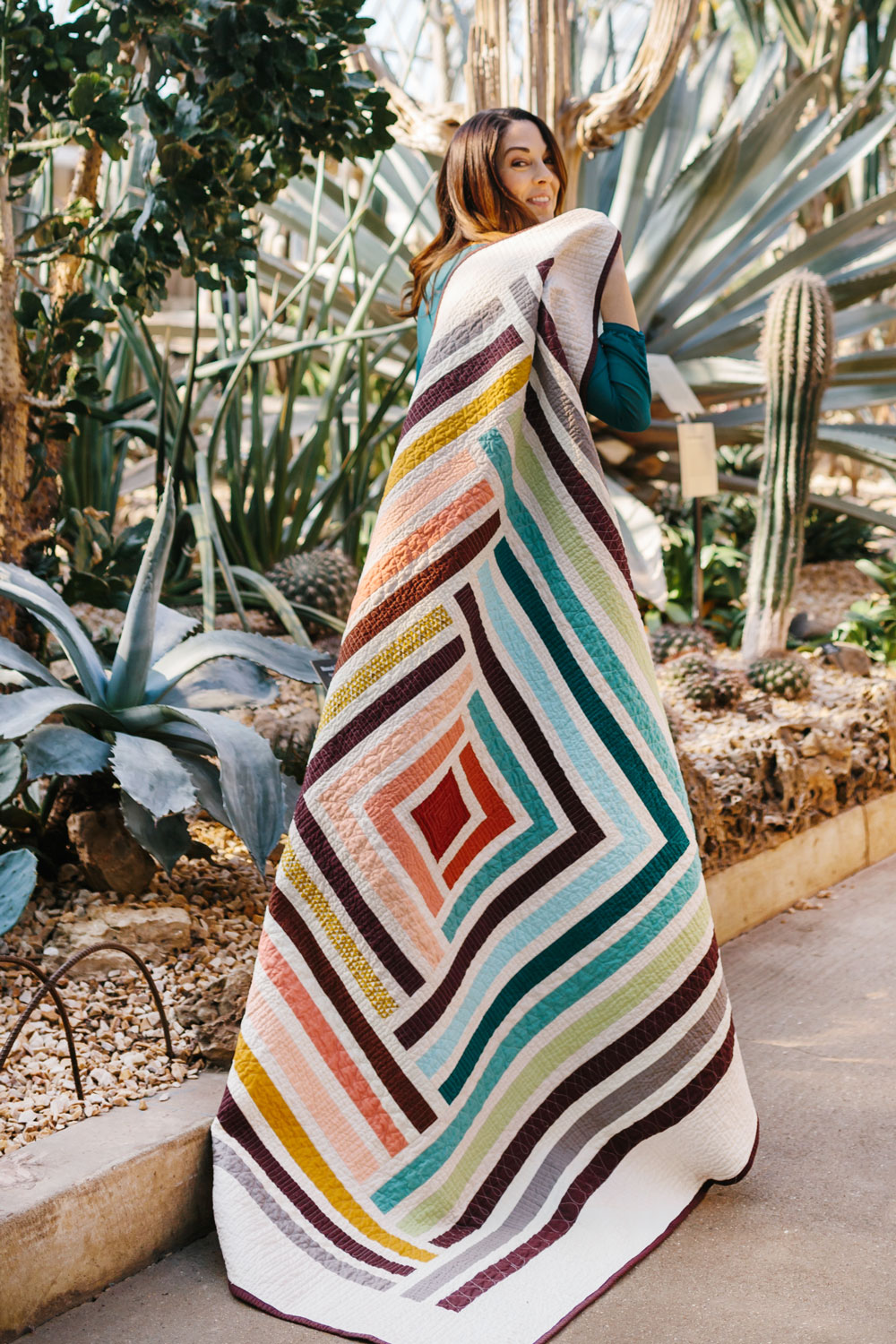
This is great for comfy bedspreads, but maybe not so great for that quilt you want to make into a wall hanging. Keep this in mind.
Despite that snuggly, crinkly look, 100% cotton batting can be pretty stiff at first. But don’t worry, your new cotton friend won’t be inflexible forever! Just give it plenty of hugs and cuddles and it will loosen right up (like I always say, quilts are a lot like people!)
So Cotton… Are You the One?
Many quilters are all the way on the 100% cotton bandwagon. Because cotton is light, soft and easy to work with, it leaves you with a great result. Cotton batting is plant-based and relatively breathable, which is also a plus.
Budget-wise, cotton usually falls somewhere in the middle, with poly blends and high-quality bamboo sitting on the low and high ends of the cost spectrum, respectively.
If you do decide to go with cotton, here are a few tricks of the quilting trade that will help you make it the very best cottony quilt it can be.
Below is a photoshoot I forced my family into helping me with this morning. As you can see my one-year old son, Desi, is not too keen on the idea. But he's so cute in his snowsuit! This is the Mod Mountains quilt pattern.
You can see my process making this exact quilt in the Mod Mountains sew along posts. It uses cotton batting, but the crinkle is more subtle because I prewashed all of the fabrics.

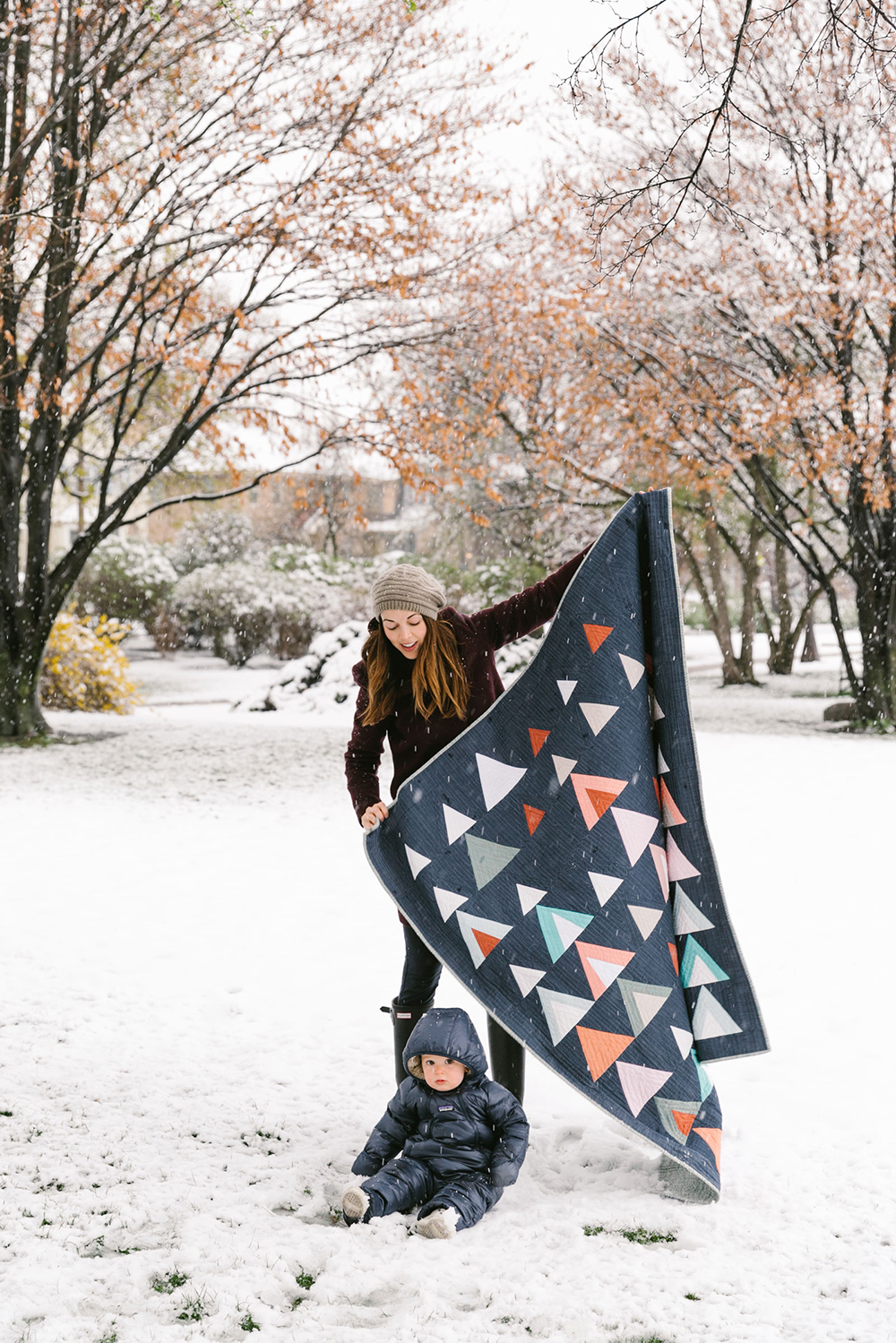
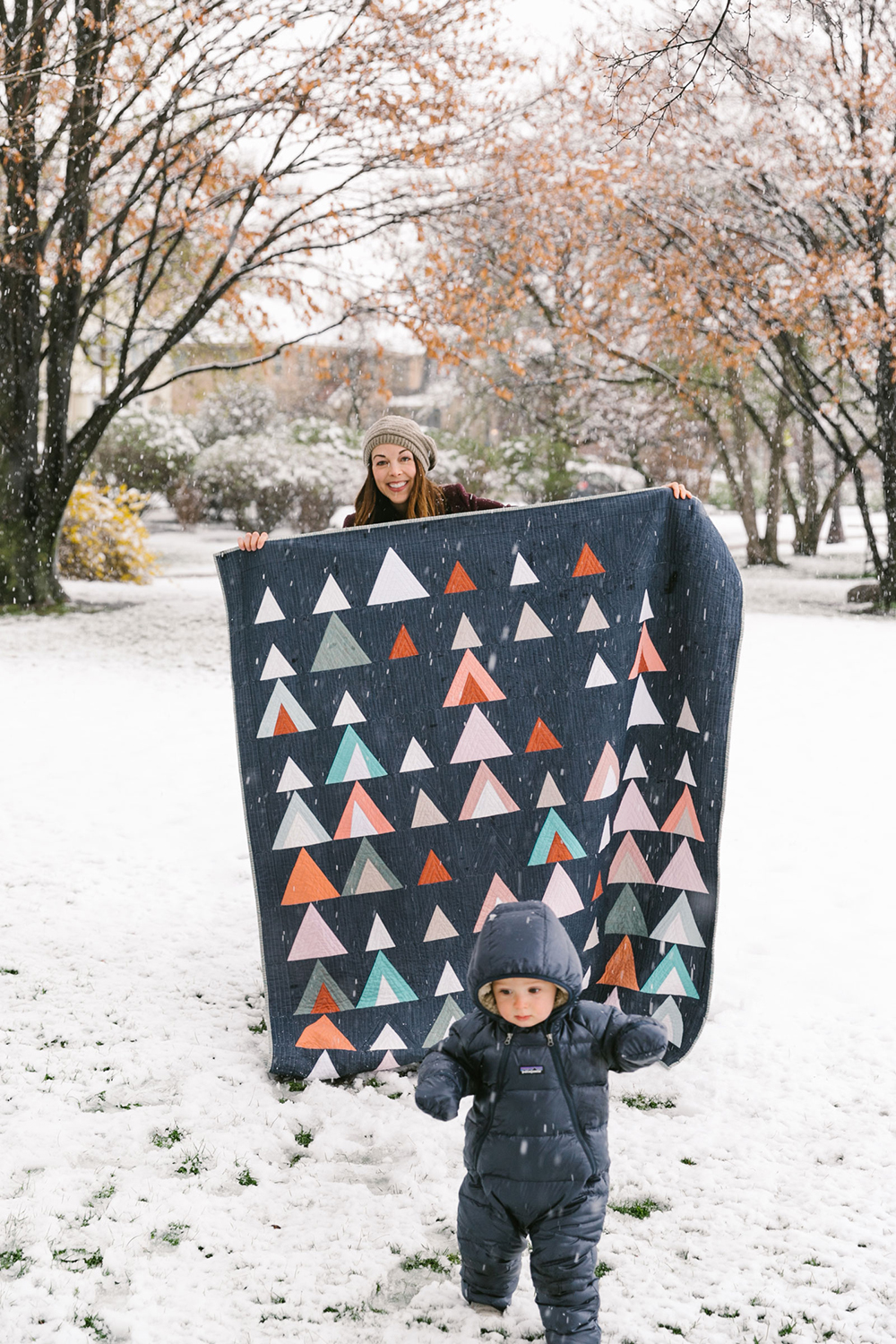
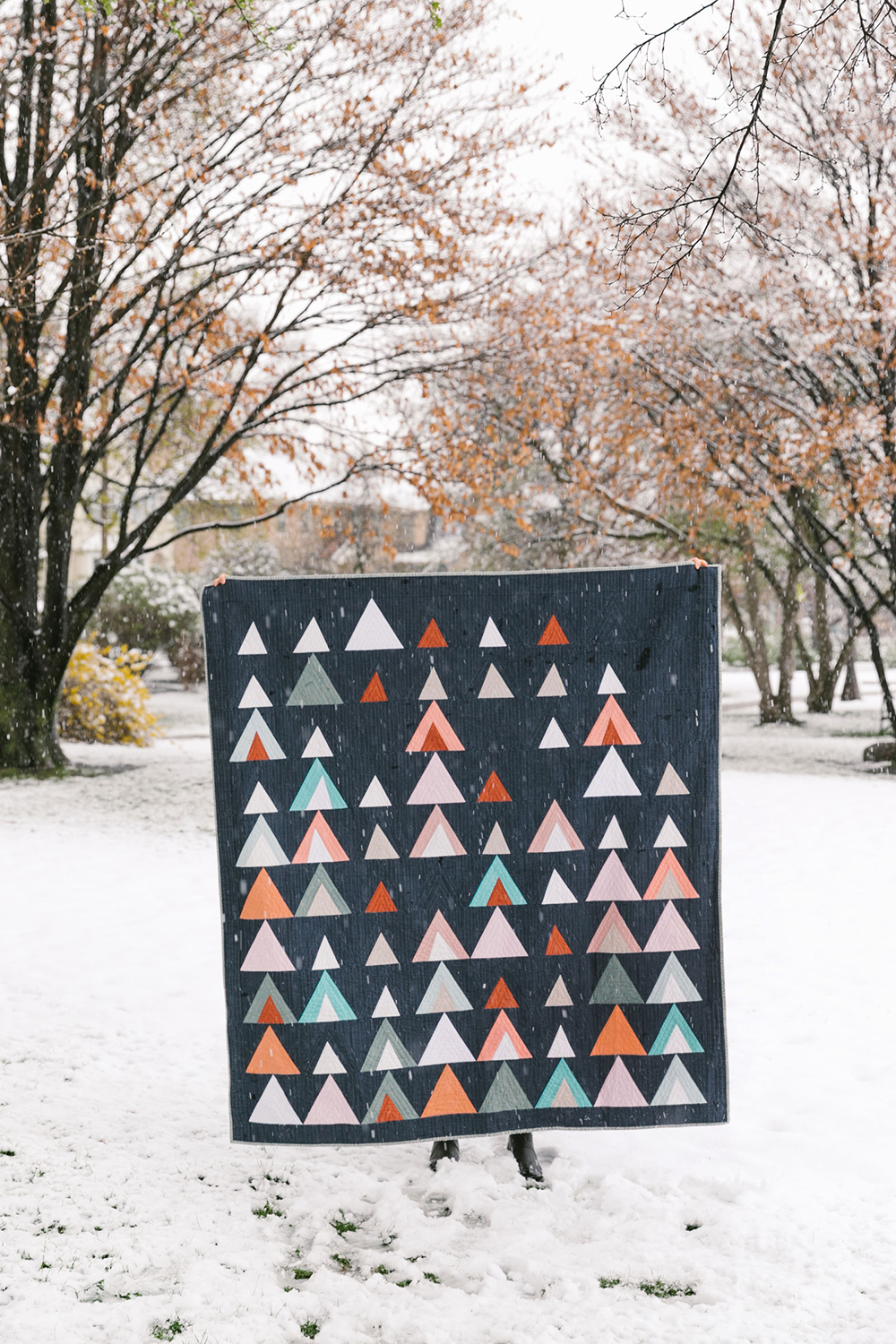
Tips for Working with Cotton Batting
Quilt a little more so it doesn't bunch. If you go with a loose (read: quilting far apart) quilting pattern, cotton can bunch after washing! Because of this, you’re probably going to want to make sure your quilting is close and tight, so that batting stays exactly where you put it.
Most packages let you know exactly how close your stitching can be. This is another one of those times that you’re going to want to read the fine print.
Keep an eye out for scrim. Scrim is a layer commonly found on batting that anchors and stabilizes the fibers to make sure they don’t separate or stretch too far. Scrim makes it possible to quilt a liiiitle bit looser than you otherwise would, and it’s ideal for machine quilting.
But here’s the thing, a lot of cotton batting doesn’t have scrim. This is because scrim is commonly made of polyester, so if batting wants to claim that desired 100% cotton status, it’s probably going to be scrim-free.
To read more about scrim, check out this post – Is There a Right Side to Quilt Batting?
You can prewash cotton batting to prevent shrinkage. If you’re on board with some crinkle, but want to take it down a few notches, you can prewash your cotton batting. My one suggestion is that you don't agitate your batting in your washing machine. If you do, you'll get one big cotton mess.
If you don't want to wash your batting by hand in a tub or large sink, fill your washing machine with water, unfold and submerge your batting and then turn your machine off. (This is to prevent any agitation.)
After it has soaked for about 30-60 minutes, drain the water and ring out your batting. The batting can be tossed in the dryer on air fluff or laid flat on some towels to dry.
Honestly, this isn’t something that I do, so if you try it out, comment and let us all know how it goes!
Most batting comes prewashed, but that doesn’t mean it won’t shrink a little more once you wash your finished quilt.
My Favorite 100% Cotton Batting
If you’ve read some of my many posts on batting, you already know that my favorite brand is Quilters Dream. This brand offers multiple lofts of cotton batting (loft is the density of your batting.)
From lightest to the most dense:
- Request — A lightweight batting that is easy to work with when hand quilting.
- Select — “standard” thickness of batting that offers some warmth while also maintaining a lovely drape. This is available in both Natural and White.
- Deluxe — Warm and dense, offering extra emphasis to your quilting design.
- Supreme — Very warm and dense and has ½ lb. of cotton per square yard!
Below is a picture of the Quilters Dream Request cotton batting.
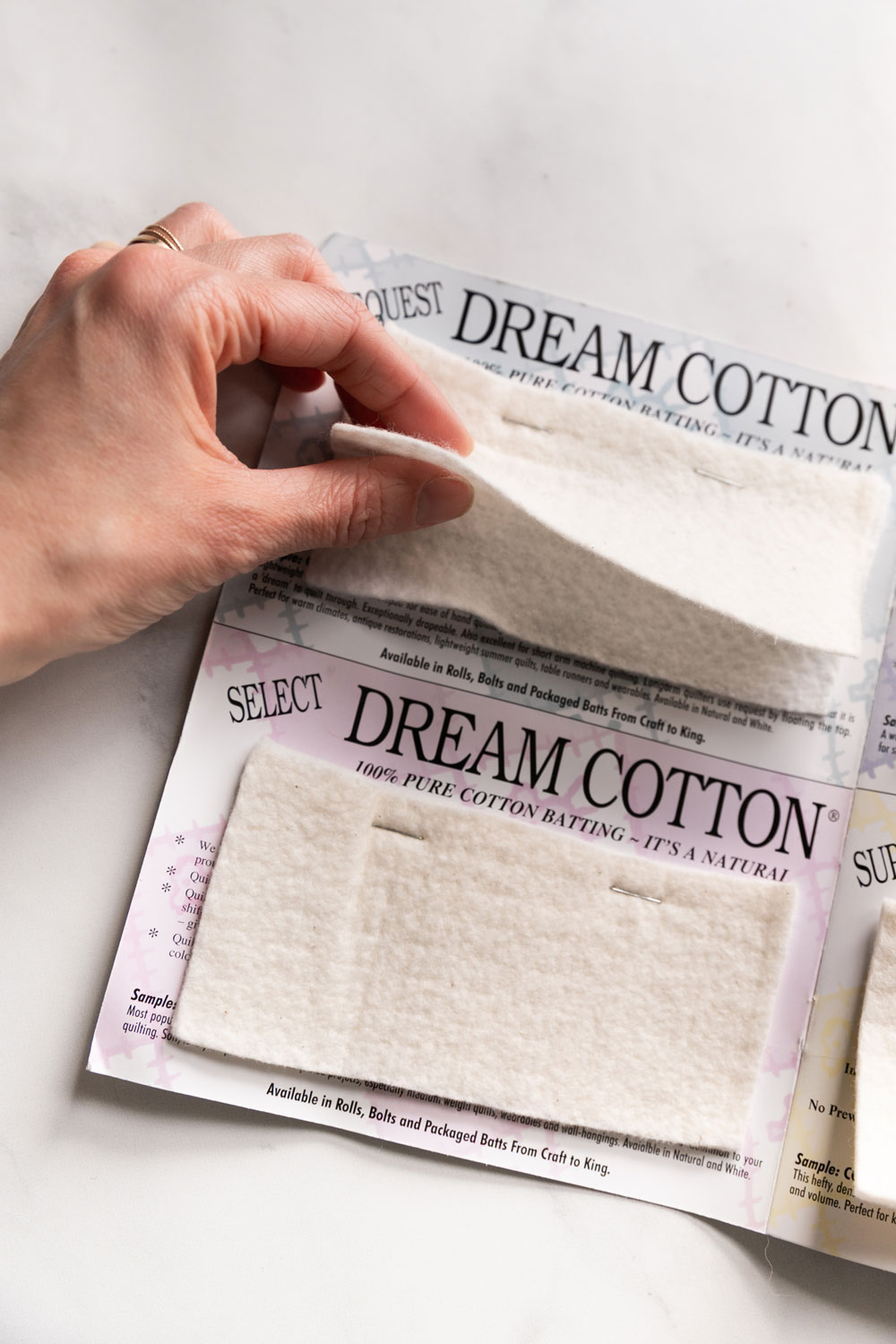
And here is a picture of the Quilters Dream Supreme cotton batting. You can see that the Request is much thinner than the Supreme.
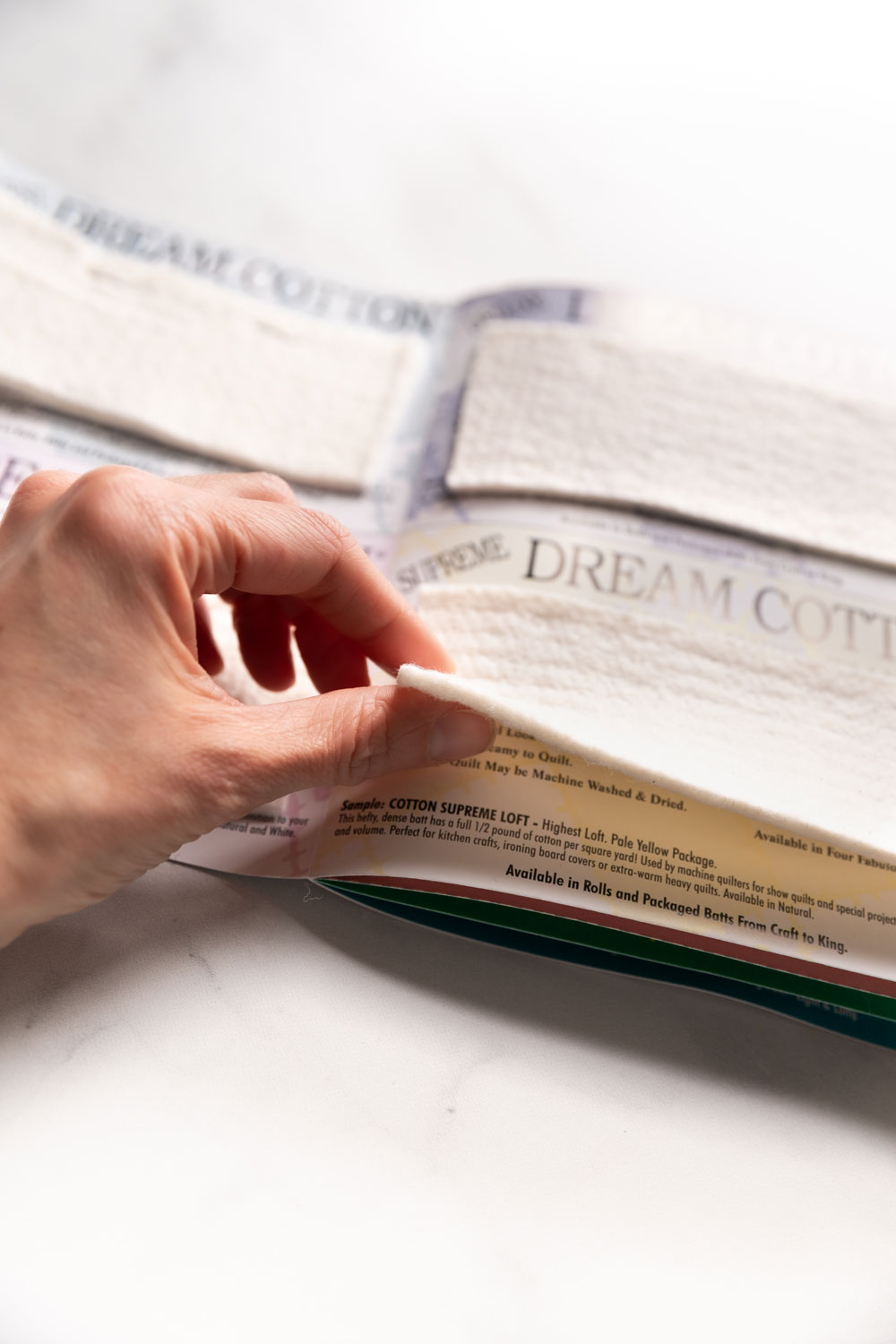
Even though I love Quilters Dream, I also think Pellon cotton batting is a great batting for the cost. It is less expensive than Quilters Dream and can usually be found at chain craft stores.
Do you have a favorite type of cotton batting? Let us know in the comments!
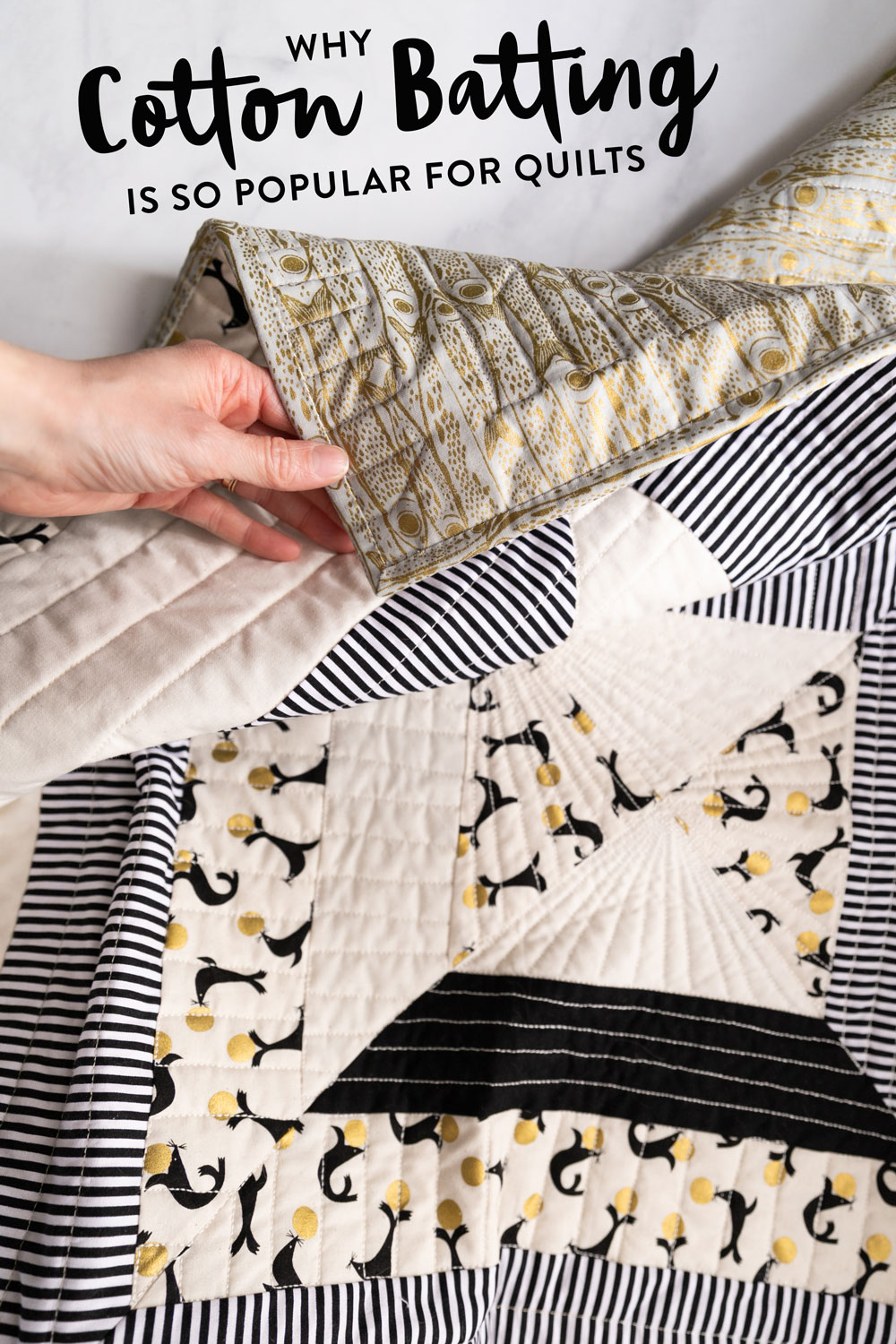
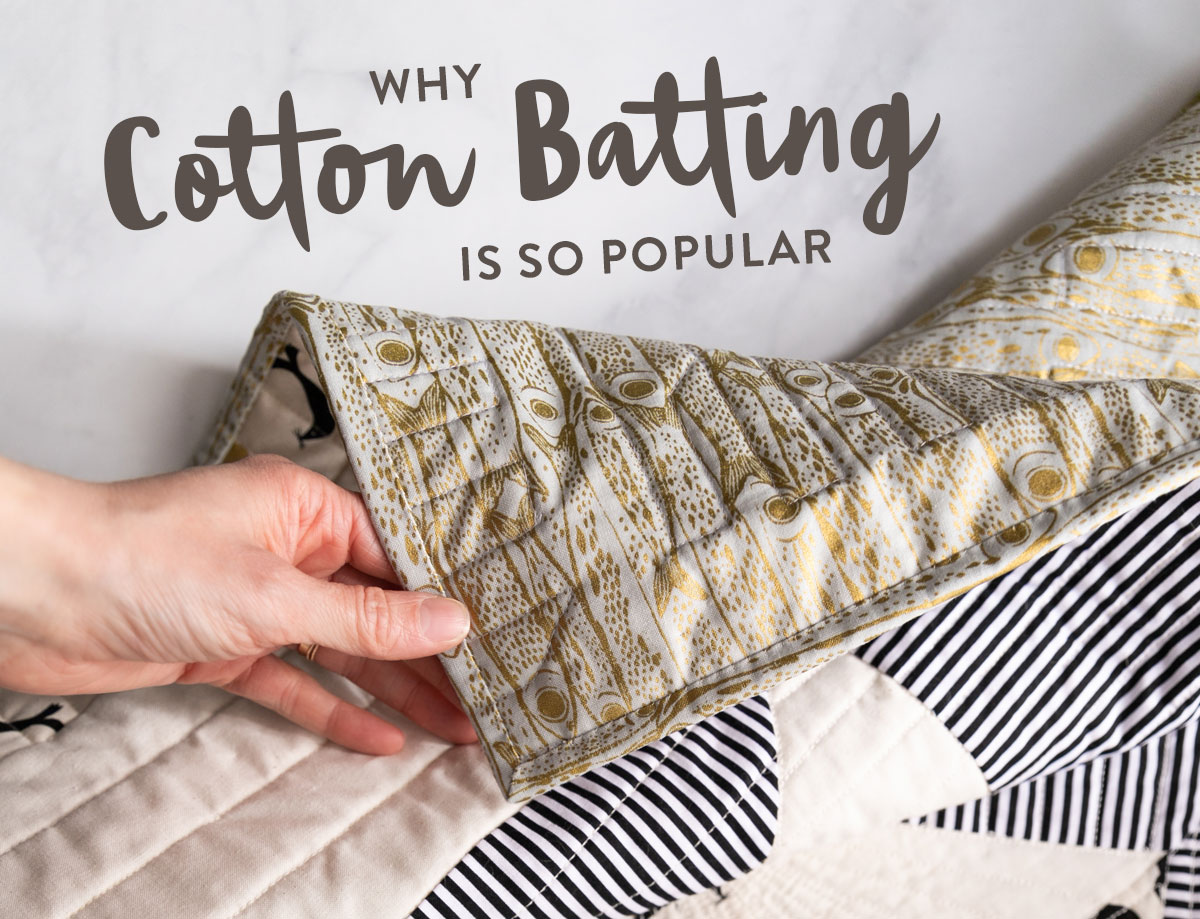
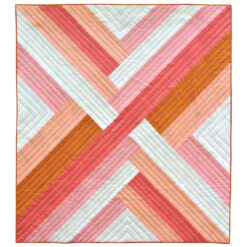
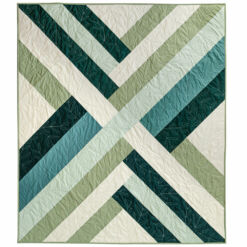
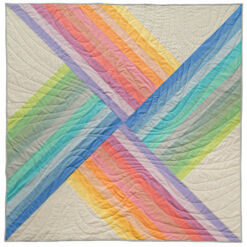
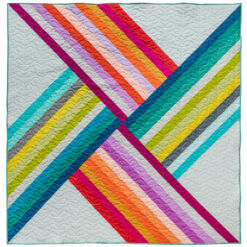
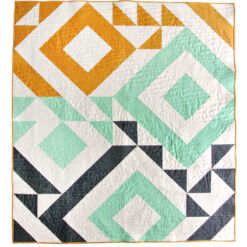
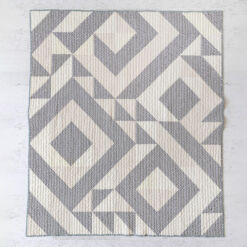
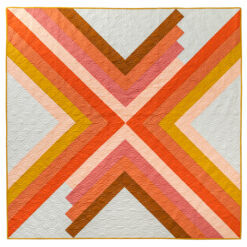
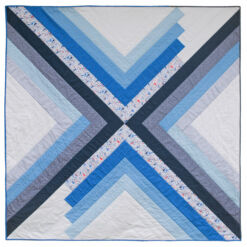
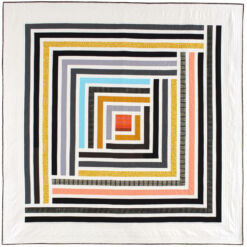
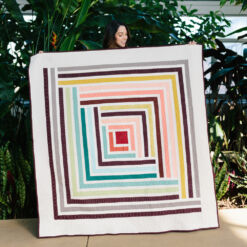
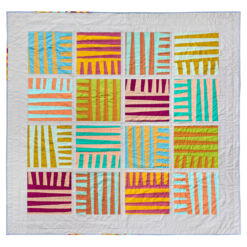
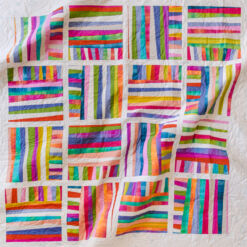
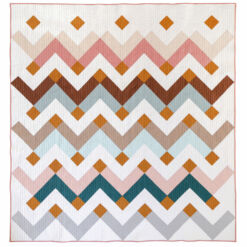
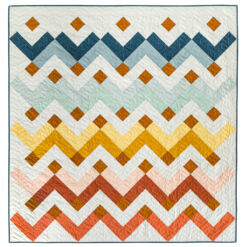
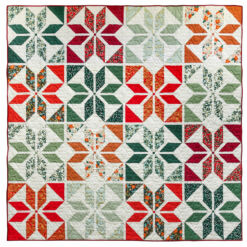
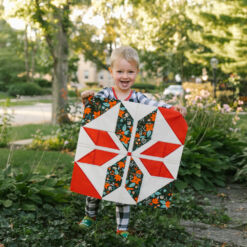
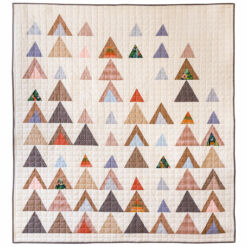
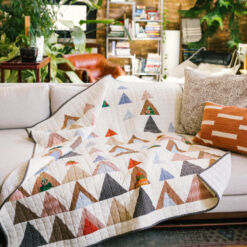
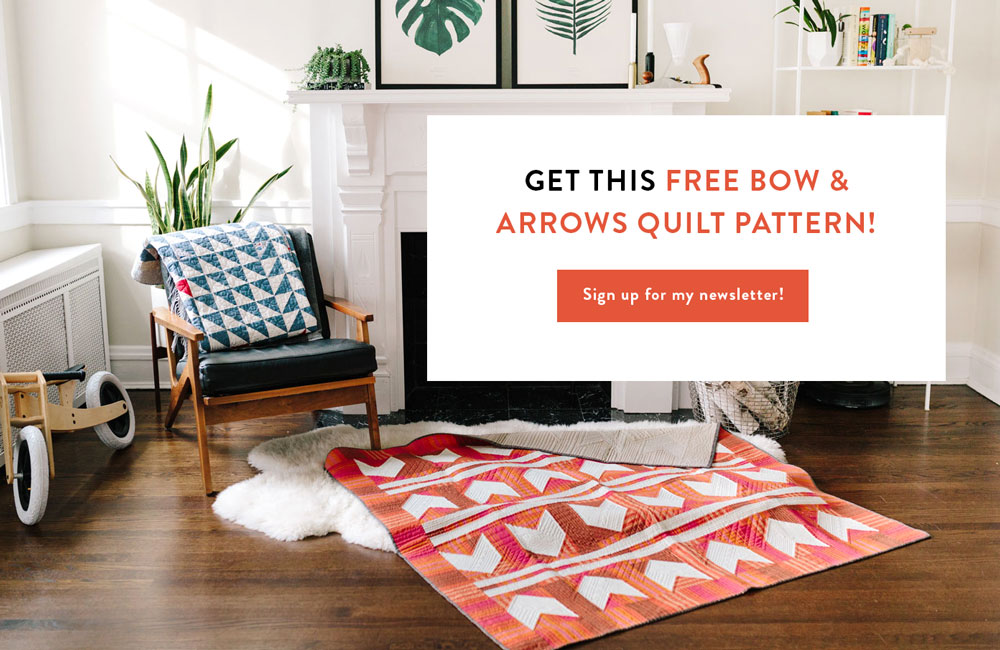
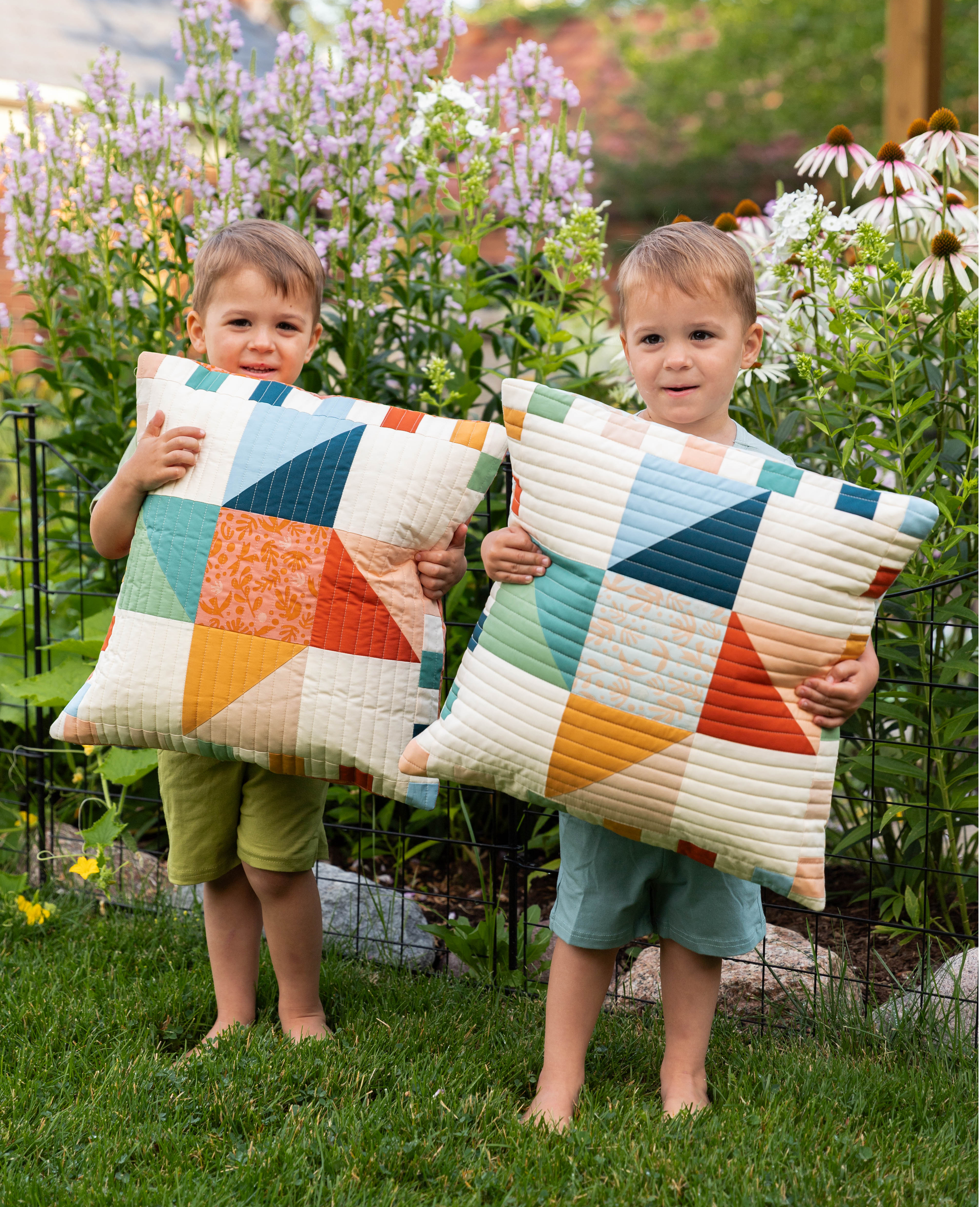

I love my Quilters Dream Batting too! It’s the only one I use. What I particularly love is the consistency in the thickness. And can you believe I used to wash my batting! I would wash it in the bathtub and then dry it on low in the dryer. When I stopped pre-washing my fabric, I also stopped pre-washing my batting 😉
The consistency is why I keep coming back too! Thanks for your review, Shannon!
Thanks for this lesson on cotton batting. It helps! I have a question for you and your circle of quilters. I have a 60 year old quilt made by my grandmother. My great nieces spilled juice on it! It had never been cleaned, and was made of drapery fabric on one side, cotton flannel on the other. It was not stitch quilted, but tied with yarn. I took it to the cleaners due to the fabric), and, oh no!, the batting bunched up in balls! Is there anything I can do with it other than deconstruct and put new batting inside? I would be VERY grateful for help here as this is a personal treasure of mine. In advance, many thanks!
I use 100% cotton batting most of the time, because a lot of my quilts get donated to our local Children’s Hospital, and I’ve been told that some people are allergic to polyester. I do have poly / cotton blend batting too, but I use it for placemats, table runners, quilts that I gift for wedding gifts, etc.
Thank you for this informative series on batting; I’ve learned a lot! I was wondering if you would share what fabric you used for your backing (the metallic gold fish pattern)? It’s lovely and I’ve never seen it or the seal prints. Thank you……..
My pleasure! These are both Cotton + Steel prints from a few years ago. The seals fabric is from the Spectacle collection and the sardines fabric is from a cat collection. Let me see if I can find a link…yes!
I also use Quilter’s Dream and as a long arm quilter have had several others from customers.
Hobbs 80/20 (not all cotton)is also nice as is the Warm & Natural line. I haven’t used
the Pellon.
I also love Pellon 100 % cotton batting. Reading the label it says 100% cotton with a scrim of less than 1% Polypropolene. I live in Canada and now the Pellon cotton batting comes with 7% Polypropolene scrim – which I have NOT used. I think I will have to look for a different batting when I use up all my Pellon batting that I have on hand (I bought all I could find of the original Pellon) I just quilt on my domestic machine and I do not wash anything first.
PS I red your column in Love Patchwork and totally enjoy it!
I always have used Pellon 100% cotton batting. I was unable to get it from the person I usually buy from so I purchased some Dream 80/20. Hoping it works out for me.
Can you tell me what the AMAZING fish print is?! I can’t find it anywhere. Thank you!
Isn’t it fun? It’s called From Porto with Love by Cotton + Steel.
You mentioned not prewashing your fabrics. I had slways heard the fabric should be prewashed. Do you have a post on this topic?
I do! https://suzyquilts.com/should-you-prewash-fabric-before-quilting/
I always pre-wash my fabric. One time I made a quilt with batik fabric and cotton batting for a queen size bed and decided that I wanted the machine quilting design to really stand out so did not pre-wash my fabric. I wound up with a quilt for a full size bed because of the major shrinkage of the fabric and its cotton batting. Major disappointment!
If you want to know if fabric in your stash has been pre washed, cut the edges with pinking scissors before washing. Using pinking scissors avoids major fraying and allows you to tell at a glance if your fabric has been pre-washed.
I’m embarrassed to ask what I think is a beginner question, but I can’t seem to find the answer online: When hand quilting, how much longer should the batting and backing be on all sides? 2–4 inches, or nothing? Thank you!
Not a silly question at all! If using a longarm quilter, they typically request an overhang of at least 4″ all around. However, if you are quilting it yourself, you just need to amount that makes you comfortable. Honestly, an inch is probably enough.
Hi Suzy. You have inspired me to do a little hand quilting. I’m going to use my walking foot for most of the quilting. Would you say the Deluxe is good for both or which would you suggest. The quilt is baby size? Thank you!
A cotton batt for a king size bed will make you cry if you are past thirty and make your bed every day. If your husband and 2 kids will help, you might make it. That thing weighs a Ton!!
That’s good to know! Sounds like you have experience with some dense cotton!
For hand quilting, do you recommend cotton, poly, or the 80/20? Or would you stick with Request only?
I’ve used all different kinds of batting, including wool and bamboo and haven’t found one that doesn’t work well.
For years all I have used is Hobbs Thermore batting. Most of my quilts were hand quilted and I loved it. Do you have any thoughts on Thermore when it comes to long arm quilting?
I wish I knew more about that, but longarm quilting is unfamiliar territory to me. I’m sure one of the quilters on this list could give you some insight, though – https://suzyquilts.com/ultimate-guide-to-longarm-quilters-in-the-usa-and-canada/
Have you tried the Birdie Bird Batting? I have used it twice now. I would not use it when using minky backing because the minky back is so slippery. What I love about Birdie Bird baiting is that you don’t have to baste. How cool is that? I know it doesn’t matter if you have a longarm, but for quilters like me who quilt on their domestic machine, it is an answer to a prayer. I didn’t even have to spray baste and no pins. It was wonderful! I want to try the bamboo batting sometime. Would love some ideas of brands.
I actually prefer the 50/50 cotton/bamboo personally. It’s just so hot and humid in Houston and I find that the bamboo really helps.
I have used 80/20 batting for all of my quilts so far, and I’m interested in used 100% cotton. I have a question, though. You said above to quilt it more densely (to prevent it from balling up), and by that how densely do you mean? Like roughly 1 inch or up to 4 inches of space between lines?
Every brand of batting is a little different, so I would first recommend looking on the packing or going to the manufacturer’s website to see what they recommend. Typically they will say to quilt no wider than 4″, 6″ max.
Ok, thank you so much!
What would recommend using to make a heavy quilt? I’m trying to find something like an old fashioned heavy quilt. The weighted blankets remind me of one I had as a kid.
What I’m thinking is you may want to double up some dense batting. Quilters Dream Supreme and Deluxe are both nice and thick.
It’s a late reply, but look at the fabrics you’re using, not just the batting. You can use middleweight fabrics, generally around 200gsm, for a significantly heavier quilt which also has really interesting texture. This includes flannel, linen blended with cotton (often sold for quilters), pure linen, corduroy (look for 21w, sold as needlecord, babycord or pincord) or cotton velvet (check the weight doesn’t get much above 200gsm, you want dressmaking velvet, not upholstery velvet). Use 1/2″ seams, prewash carefully as these fabrics are more prone to shrinking, and make sure you learn what the different fabrics need. For instance velvet should only be pressed from the back over a towel, and if you sew two pieces of velvet together and don’t match the pile direction, they’ll try to creep apart (needlecord too, but not as much). You can also use denim, that’s a really popular way to make a heavy quilt, but I only sew by hand, so I haven’t tackled jeans-weight denim. You get fabulous quilts this way, lovely and heavy, and the texture is amazing. And weirdly, these gorgeous fabrics are often way cheaper than quilting cotton. Velvet makes a lovely quilt backing, and it’s cheap!
This was so informative! What do you think about wool batting? I have used it in my last two quilts and had them quilted on a long arm. The CRINKLE is just wonderful and the feel of the quilt is the best yet. Have you used it?
thank you Suzy
I love wool batting for those extra cozy winter quilts 🙂 https://suzyquilts.com/why-wool-batting-makes-the-warmest-quilts/
Could you tell me what pattern the black and white quilt is? And fabric line.
Love the colors. Thank you.
Hi Cheryl! The quilt pattern is Reflections and you can find it in our shop here: https://suzyquilts.com/shop/reflections-quilts-pattern-download/
The fabric is an old out of print Cotton and Steel print. Most printed fabrics are only available for a short time and unfortunately, this is one of our older blog posts — from 2020!